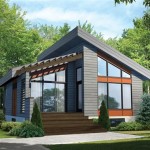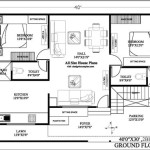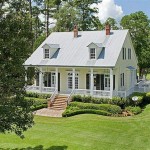University of Florida Bat House Plans: Providing Shelter for Beneficial Bats
The University of Florida (UF) Wildlife Extension offers a variety of resources and information on bat conservation, including detailed plans for constructing bat houses. These plans are specifically designed to attract and provide shelter for beneficial bat species that play a crucial role in controlling insect populations and promoting biodiversity. By providing a safe and comfortable habitat, bat houses can help increase bat populations and enhance the ecological balance of an area.
Understanding Bat Housing Needs
Bats are fascinating creatures that face numerous challenges, including habitat loss and disease. Understanding the specific needs of bats is essential for designing effective bat houses. UF's bat house plans are based on extensive research and best practices, ensuring that the structures meet the following key criteria:
Location and Placement
The location of a bat house is crucial for its success. Bat houses should be placed in locations that receive ample sunlight and are sheltered from wind and rain. Ideally, the house should be situated on a south-facing wall or structure, with the opening facing away from prevailing winds. Additionally, the height of the house is important; it should be at least 15 feet above the ground, allowing bats to easily access and exit the house. The location should also be away from any potential sources of disturbance, such as heavy traffic or construction.
Size and Design
The size and design of a bat house are essential for accommodating the specific requirements of different bat species. The UF plans offer options for varying sizes of bat houses, catering to the needs of different bat species. For example, smaller bat houses may be ideal for smaller bat colonies, while larger houses can accommodate larger populations. The plans also include details about the dimensions of the entrance, roosting chambers, and ventilation. The entrance should be narrow enough to deter predators, while the roosting chambers should provide ample space for bats to hang and roost. Ventilation is crucial for maintaining optimal temperature and humidity levels within the house.
Materials and Construction
The materials used for building a bat house are vital for its durability and longevity. UF plans recommend using untreated lumber, such as cedar or redwood, as these materials are naturally resistant to rot and insects. Avoid using treated lumber, as it can release harmful chemicals that may be detrimental to bats. The construction process should be meticulous, ensuring that the house is structurally sound and well-sealed to protect the bats from the elements. The instructions provided in the UF plans include detailed guidance on how to properly assemble and secure the bat house.
Tips for Encouraging Bats
Even with a well-constructed bat house, there are a few additional tips that can enhance the success of the project. For example, it's important to provide a consistent water source near the bat house, such as a shallow dish or a drip irrigation system. This will help bats stay hydrated, especially during hot and dry periods. Additionally, limiting the use of pesticides and insecticides in the surrounding area is vital for protecting bats from exposure to harmful chemicals. A well-maintained and strategically placed bat house can contribute to the health and well-being of bat populations in the surrounding environment.
Benefits of Bat Houses
Bat houses offer numerous benefits, contributing to both ecological balance and human well-being. By providing shelter for bats, bat houses help increase bat populations, which in turn leads to better pest control. Bats are highly efficient insect predators, consuming significant amounts of mosquitos, moths, and other insects. This can significantly reduce the need for chemical pesticides, promoting a more natural and sustainable approach to pest management. Furthermore, bats play a vital role in seed dispersal and pollination, promoting biodiversity and enhancing ecosystem services. Installing bat houses is a simple but effective way to contribute to the conservation of these valuable creatures.
Getting Started with UF Bat House Plans
The UF Wildlife Extension website provides comprehensive resources and information on bat conservation, including downloadable plans for bat houses. These plans are readily accessible and offer detailed instructions for constructing a variety of bat house designs. The website also provides information on bat identification, bat biology, and the importance of bat conservation. By following these resources and guidelines, individuals can contribute to the preservation of bat populations and the health of our environment.

The University Of Florida Bat House Conservancy

Bat Houses Gardening Solutions University Of Florida Institute Food And Agricultural Sciences

Go Batty At The University Of Florida Bat Houses Authentic
The World S Largest Occupied Bat Houses University Of Florida In Gainesville Family Nature

The Ultimate Campus Move In Challenge Rehoming Uf S Iconic Bat Colony News University Of Florida

Rush Is On To Get Uf S Bat House Up And Running Again

Bat Houses At U Of Fl Picture University Florida House Gainesville Tripadvisor

Nocturnal Neighbors

Uf Bat Colony Relocates To Newest House News University Of Florida

If Bats Are Bothering You Build Them A Dream House Atlas Obscura








